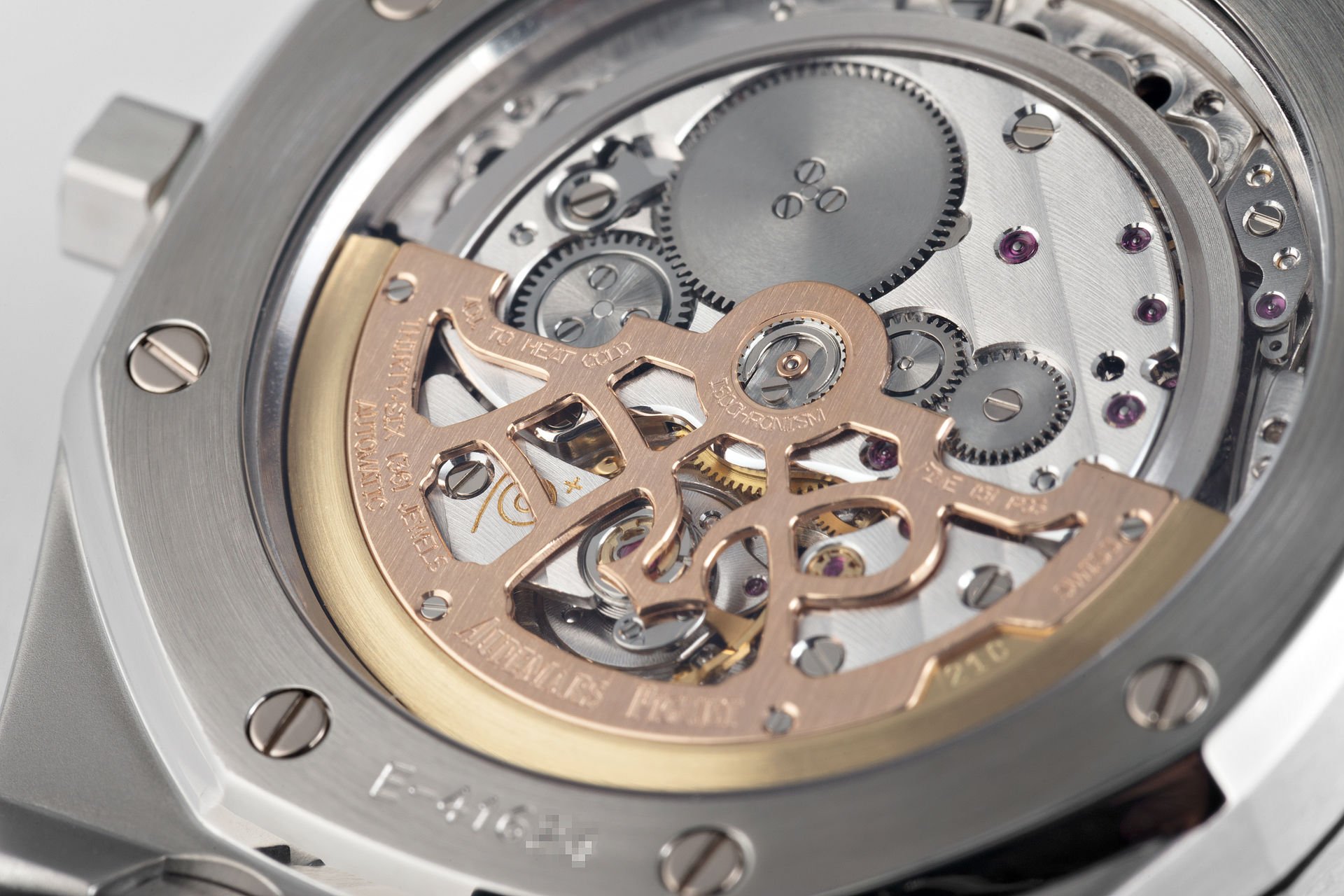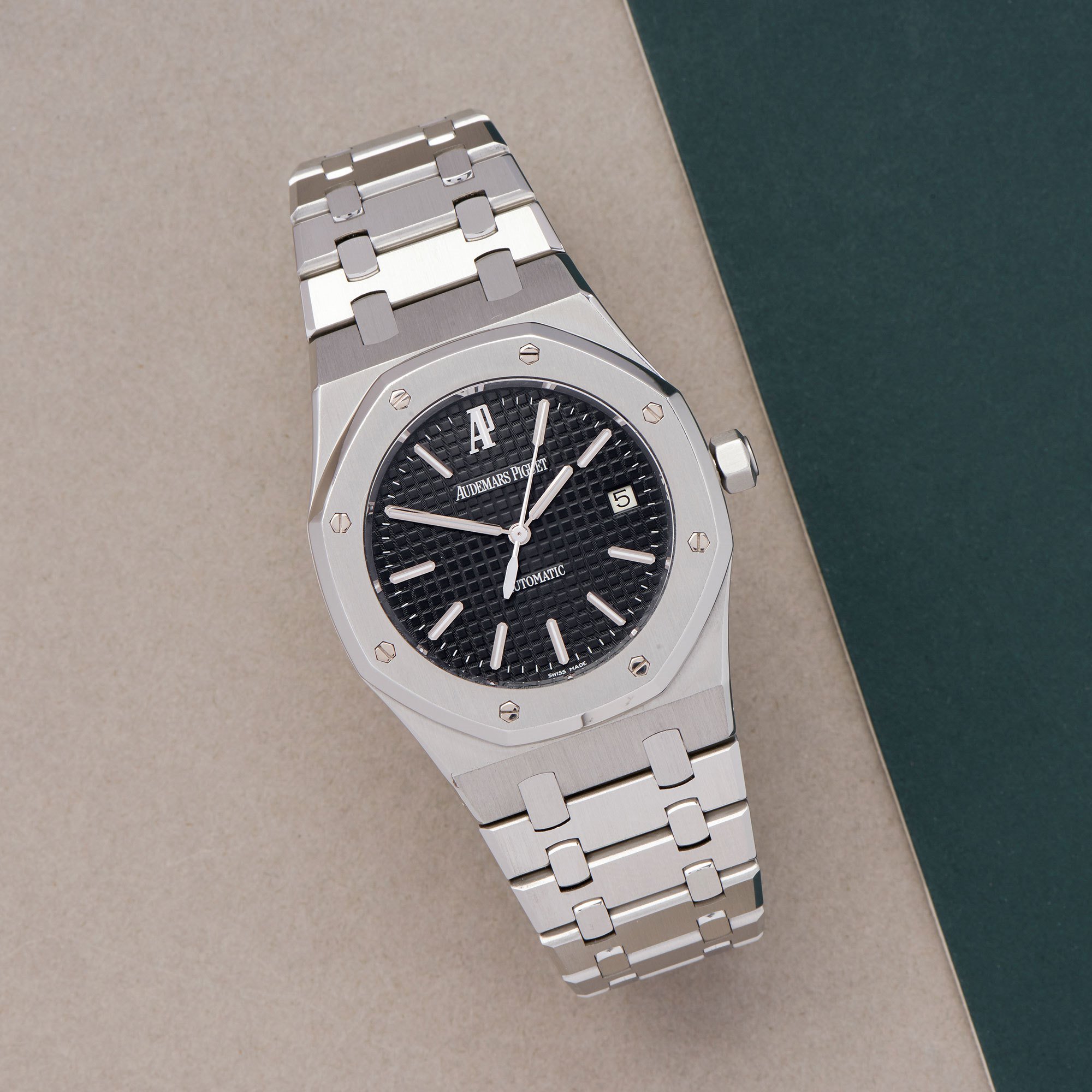Fratello’s Top 5 Audemars Piguet Royal Oak Models Ever Produced
This week’s Top 5 article has been giving me a bit of a headache. I consider myself a bit of a purist when it comes to watches, so to me, there’s basically only one essential Audemars Piguet Royal Oak — the “Jumbo.” And I could go the easy route and just list all the references for the Jumbos that AP has produced, starting with reference 5402 in the image above.
But that would sell Audemars Piguet’s most famous watch short, in my opinion. There is a world of Royal Oaks besides the “Jumbo” (or “Extra-Thin”) for sure, like the Royal Oak Chronograph and the 1993 Royal Oak Chronograph “The Beast.” Let’s kick it off with the “Jumbo,” and I will definitely mention the references of this model.
1. Royal Oak “Jumbo”
I don’t want to make this into a history lesson. You can find the background information on the first Audemars Piguet Royal Oak in the article that I wrote for its 50th anniversary here. However, it’s important to know that the first Royal Oak ever (reference 5402) was the 39mm “Jumbo,” which later became the reference 14802, 15002, 15202, and the 16202 of today. You simply can’t go wrong with any of these because they all have nearly identical cases (39mm in diameter and approximately 8mm in thickness).
In my humble opinion, that’s the perfect size for this watch. The 41mm versions look oversized, and the 36mm versions are too cramped. You will also find some other 39mm models in this overview for exactly that reason. It seems Genta’s eye was spot on when he came up with the original 39mm diameter. One of the things that set the “Jumbo” apart from the 36mm and later 41mm models was the movement.
It was an ultra-thin one that Jaeger-LeCoultre originally designed as the caliber 920. AP’s version, caliber 2121, was incredibly thin and beautifully hand finished by the brand. The 21K gold rotor was mounted on a rail rather than on more common ball bearings. And on top of that, it had a Patek Philippe Gyromax balance.
The Royal Oak “Jumbo” has always been available in different materials, such as yellow gold, rose gold, and platinum. But the concept behind the original was, of course, a luxury sports watch in steel. In the years that I have collected watches, I’ve seen the retail price go up from around €14,000 to today’s price of CHF 34,000. In the last few years, the pre-owned prices skyrocketed to well over the retail price, and I can’t see these prices meeting each other again very soon. Aside from the price, if there’s one Royal Oak that AP should always have in the collection, it’s the “Jumbo” for sure.
2. Royal Oak Offshore “The Beast”
You might not agree with this placement because there may be many other Royal Oak models that prevail in your opinion. Nevertheless, the Offshore reference 25721ST was a game-changer for Audemars Piguet. In this article, I wrote about the history of the Royal Oak Offshore. In short, Audemars Piguet wanted a more masculine watch for a younger audience. Women were wearing the regular Royal Oaks, and AP wanted something aimed at men (different times, people, different times). So in 1989, then-CEO Stephen Urquhart asked designer Emmanuel Gueit to come up with something that would fit the bill.
The Royal Oak Offshore was his answer. After postponing the introduction for several years, AP finally introduced the watch in 1993. The Offshore was bold and ruthless, and later on, it inspired many other brands to follow. There’s an anecdote that Genta angrily told Gueit that he ruined his original design, but there was no stopping it. When I started collecting watches, the Royal Oak Offshore was way more popular than the regular Royal Oak models. Especially with the Offshore Theme series (remember the Safari?), they were in incredibly high demand. These days, the enthusiasm for the Offshore models seems to have cooled down a bit, and the regular Royal Oaks tend to be stronger performers. But make no mistake, these Royal Oak Offshore watches did wonders for the desirability of Audemars Piguet watches in the 1990s and 2000s.
3. Royal Oak RD#2 Perpetual Calendar Ultra-Thin
A watch that was never for sale is the 2018 Royal Oak RD#2 Perpetual Calendar Ultra-Thin. This watch measured 41mm wide but only 6.3mm thick, and it was made entirely out of platinum. But the “magic” was the incredible thinness of this watch while boasting a perpetual calendar complication.
The AP caliber 5133 has a power reserve of 40 hours, consists of 256 parts, and is just 2.9mm thick. By comparison, the caliber 5134 (a self-winding movement with a perpetual calendar) inside the Royal Oak Perpetual Calendar reference 26597PT consists of 374 parts and measures 4.31mm thick. So that’s about a 33% decrease in both the thickness and the number of parts for the 5133. One year later, in 2019, Audemars Piguet introduced the Royal Oak Selfwinding Perpetual Calendar Ultra-Thin RD#2 reference 26586IP.OO.1240IP.01, limited to 200 pieces only. That watch was made of a combination of platinum and titanium and without the Grande Tapisserie dial. This year, AP introduced the full-titanium version (weighing only 75 grams) of this Perpetual Calendar Ultra-Thin (more here). Just like the next watch in this article, these ultra-thin perpetual calendars have been pushing the boundaries of what’s possible in watchmaking.
4. Royal Oak Concept
Thirty years after the introduction of the Royal Oak 5402, Audemars Piguet decided it was time to come up with another shocker — the Royal Oak Concept Watch 1 (or CW1). This 44mm “beast” was made of Alacrite 602. This alloy had not been used in the watch industry before but had its roots in the aerospace and medical industries. It was harder than steel but also lightweight. Inside was AP’s then-new caliber 2896. And besides a tourbillon, the Royal Oak Concept from 2002 also featured a Dymograph. The Dymograph indicates the torque of the mainspring at that particular moment. The movement was developed by Audemars Piguet Renaud & Papi (APRP).
Since then, Audemars Piguet has released several Royal Oak Concept watches (including a Michael Schumacher edition), even this year. It’s a collection of Royal Oak watches that push the boundaries in terms of design and innovation. However, to me, the first Royal Oak Concept Watch 1 (2002) is still the most impressive one.
5. Royal Oak 15300
Interestingly, the 36mm models (the last one being the 14790) were replaced by another 39mm model, the Royal Oak 15300. This model was introduced in 2005 at the salon in Geneva. Not only did the case diameter of the Royal Oak Date model increase, but it was also the first time that a regular Royal Oak had an in-house-developed movement (caliber 3120). It was available with a black (above), blue, or silvery-white dial (below).
Despite being 39mm wide, the 15300 had slightly different proportions than the “Jumbo” of that time (reference 15202). The watch was thicker, but the bracelet was also more solid and had a butterfly clasp. Giveaways on the dial that this was not the 15202 are the location of the “Automatic” wording as well the presence of a seconds hand. The reference 15300 retailed for under €10,000 in those days and could be had for about 50% of that, but it tripled in price on the pre-owned market in recent years. In 2012, this model was replaced by a 41mm reference 15400.
Final thoughts
You might have five completely different Royal Oak models as favorites, but these are my picks when it comes to Genta’s (and Gueit’s) watches. While Audemars Piguet’s watches were never affordable, I’m fully aware that today’s prices make them only for the happy few. But if you look past the price tags, what are your favorite Royal Oak models? I would be happy to learn.












